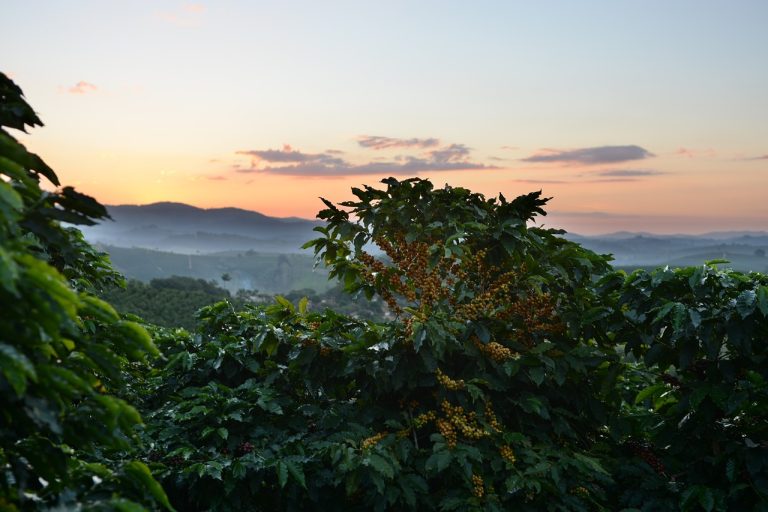Key Takeaways
- December arabica coffee futures experienced a 2.04% decline, while November ICE robusta coffee futures dropped by 3.17%.
- Improved rain forecasts in Brazil and Vietnam eased concerns over potential crop damage, contributing to price decreases.
- While shrinking ICE coffee inventories initially supported prices, this was offset by better weather outlooks and increased Vietnamese exports.
- Speculation about the potential relaxation of US tariffs on Brazilian goods is also exerting downward pressure on coffee prices.
- Despite recent price drops, longer-term forecasts continue to suggest possible supply deficits for arabica coffee.
Coffee Market Sees Volatility Amid Shifting Weather and Trade Dynamics
December arabica coffee futures (KCZ25) saw a notable decline of 2.04%, settling at -8.60. Concurrently, November ICE robusta coffee futures (RMX25) experienced a steeper drop of 3.17%, falling to -150. Both contracts reversed earlier gains, with arabica retreating from an 8.5-month high and robusta moving away from a 5-week peak. This market movement was primarily influenced by updated weather forecasts from key coffee-producing regions.
Arabica prices faltered following predictions of weekend showers for Brazil’s coffee-growing areas. Simultaneously, robusta coffee futures slipped as Vietnam’s weather agency indicated a reduced likelihood of heavy rainfall in the Central Highlands, thereby easing concerns about potential crop damage in the nation’s primary coffee-producing region.
Factors Influencing Coffee Price Fluctuations
Brazilian Crop Concerns Ease with Rainfall Forecasts
Earlier in the trading session, coffee prices had seen an upward trend due to apprehensions about the impact of prolonged dry conditions in Brazil during the critical flowering period for coffee trees, which could threaten the 2026/27 crop.
📊 According to Bloomberg Brazil Weather Analysis, Brazilian coffee-producing regions had been contending with intense drought. The state of Minas Gerais, a significant arabica coffee-growing area, had recorded only about 70% of its average rainfall over the preceding month, amplifying concerns about future yields.
ICE Coffee Inventory Drawdowns Provide Initial Support
Coffee prices also found support from declining ICE coffee inventories. The imposition of a 50% tariff on US imports from Brazil had significantly depleted these reserves. ICE-monitored arabica inventories had reached a 19-month low of 465,910 bags, and ICE robusta coffee inventories fell to a 3-month low of 6,141 lots.
⚡ American buyers were reportedly avoiding new contracts for Brazilian coffee due to the substantial tariffs, leading to a tightening of US supplies. This is particularly significant as Brazil accounts for about a third of America’s unroasted coffee imports.
La Niña Forewarning Boosts Prices
Further bolstering coffee prices was the National Oceanic and Atmospheric Administration’s (NOAA) announcement on September 16. NOAA increased the probability of a La Niña weather system forming in the southern hemisphere between October and December to 71%. Such a system could bring excessively dry weather to Brazil, potentially harming the 2026/27 coffee crop, a crucial period for the world’s largest arabica coffee producer.
Trade Tariff Speculation and Regional Weather Updates Impact Market
Trade Tariff Speculation Adds Bearish Pressure
Conversely, hopes for the eventual removal of the 50% tariffs on Brazilian goods are acting as a bearish factor for coffee prices. Recent high-level discussions between US and Brazilian officials have been described as very positive. The scheduling of a meeting between President Trump and President Lula further fuels speculation that trade relations, and possibly tariffs, could be eased.
Regional Weather Improves in Brazil
Somar Meteorologia reported that Minas Gerais, Brazil’s prime arabica coffee-growing region, received 44.7 mm of rain in the week ending October 18, which is 136% of the historical average. This indicates a significant improvement in local weather conditions.
Vietnam’s Robust Supply Increases
📍 Robusta coffee is also facing downward pressure due to increased supplies from Vietnam. The Vietnam National Statistics Office reported that Vietnam’s coffee exports from January to September 2025 rose by 10.9% year-over-year to 1.230 million metric tons. Furthermore, Vietnam’s 2025/26 coffee production is projected to increase by 6% year-over-year to 1.76 million metric tons (29.4 million bags), marking a 4-year high for the world’s largest robusta producer.
Global Supply and Demand Outlook for Coffee
Global Exports Indicate Ample Supplies
Larger coffee exports generally exert bearish pressure on prices. The International Coffee Organization (ICO) reported on October 6 that global coffee exports for the current marketing year (October-August) increased by 0.2% year-over-year to 127.92 million bags, suggesting adequate global supplies.
Brazilian Crop Estimates Revised Downward
✅ Coffee prices did find some support earlier when Conab, Brazil’s crop forecasting agency, revised its Brazil 2025 arabica coffee crop estimate downward by 4.9% to 35.2 million bags on September 4, from a May forecast of 37.0 million bags. Conab also lowered its total Brazil 2025 coffee production estimate by 0.9% to 55.2 million bags, down from 55.7 million bags in May.
Mixed Production Forecasts with Long-Term Arabica Deficit Concerns
📊 The USDA’s Foreign Agriculture Service (FAS) projected on June 25 that world coffee production in 2025/26 would increase by 2.5% year-over-year to a record 178.68 million bags. This projection includes a 1.7% decrease in arabica production to 97.022 million bags and a significant 7.9% increase in robusta production to 81.658 million bags. FAS forecasts Brazil’s 2025/26 coffee production to rise by 0.5% year-over-year to 65 million bags, and Vietnam’s output to climb by 6.9% year-over-year to a 4-year high of 31 million bags. FAS forecasts that 2025/26 ending stocks would increase by 4.9% to 22.819 million bags. However, Volcafe projects a global 2025/26 arabica coffee deficit of 8.5 million bags, an expansion from the 5.5 million bag deficit in 2024/25, marking the fifth consecutive year of deficits.
Final Thoughts
Market Summary
The coffee market experienced a notable pullback as improved weather forecasts in Brazil and Vietnam eased immediate supply disruption fears. While tightening ICE inventories initially provided a floor, shifts in weather sentiment and expectations regarding US-Brazil trade relations weighed heavily on prices. Market participants will continue to monitor weather patterns, export data, and trade policy developments closely.

